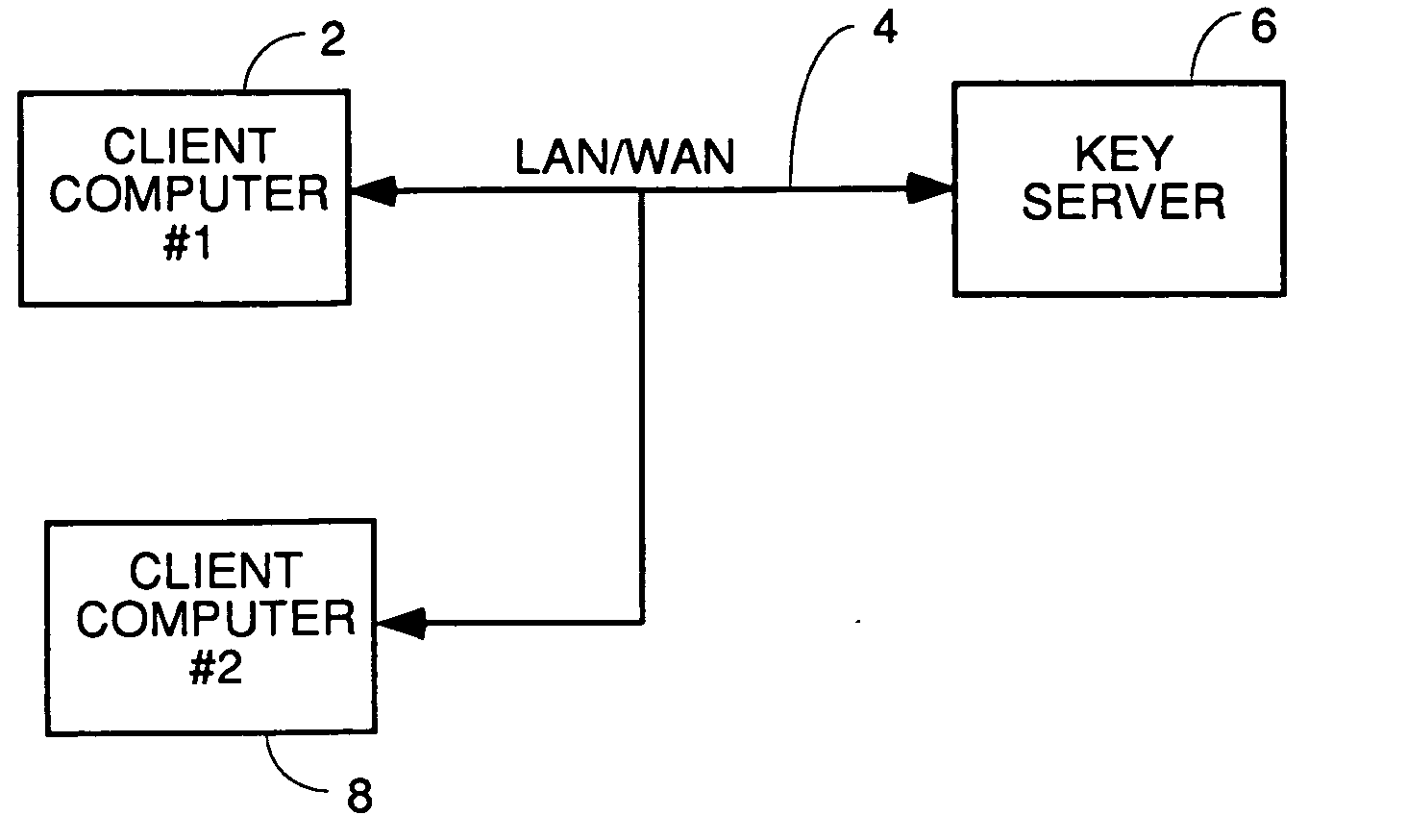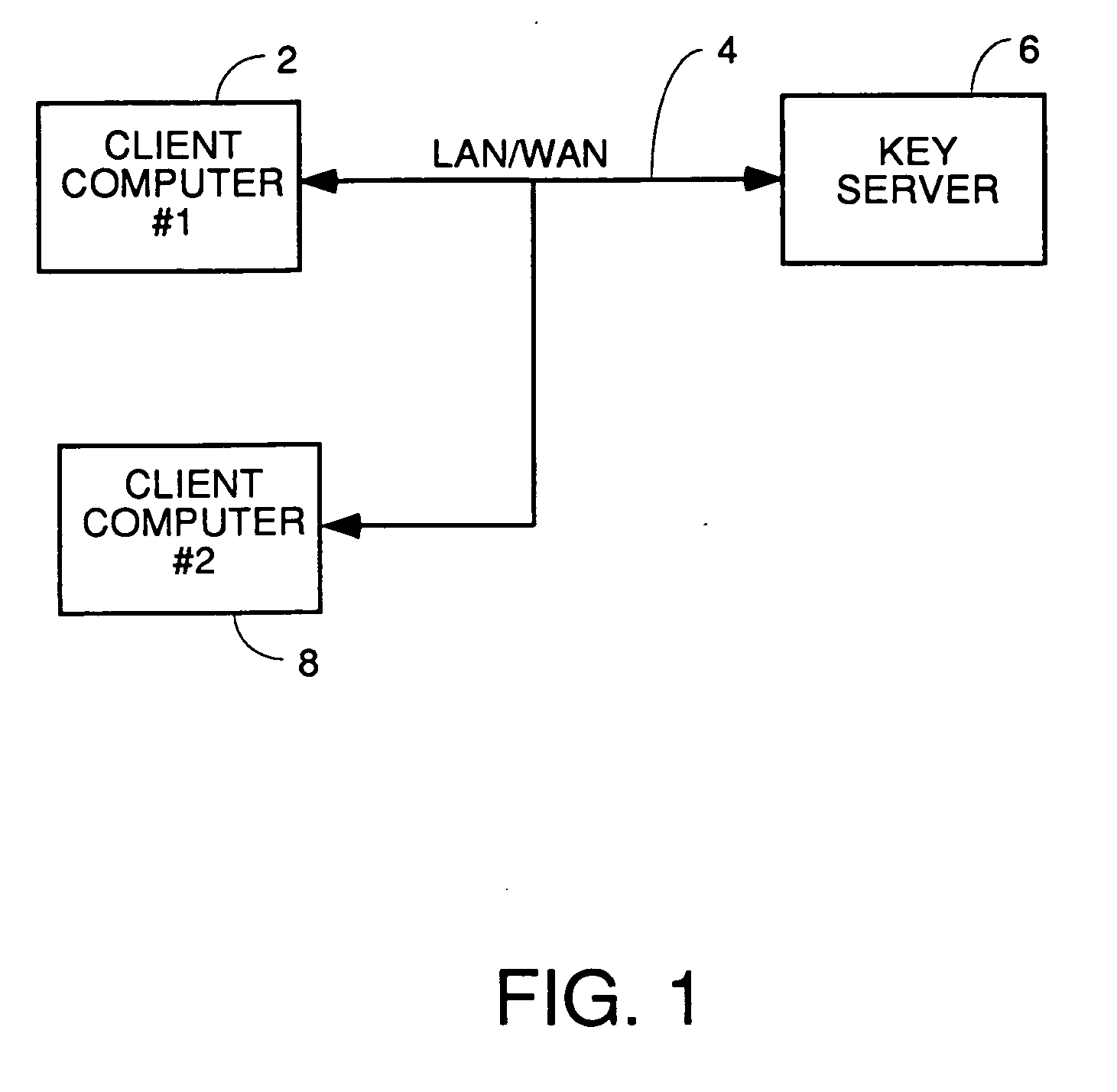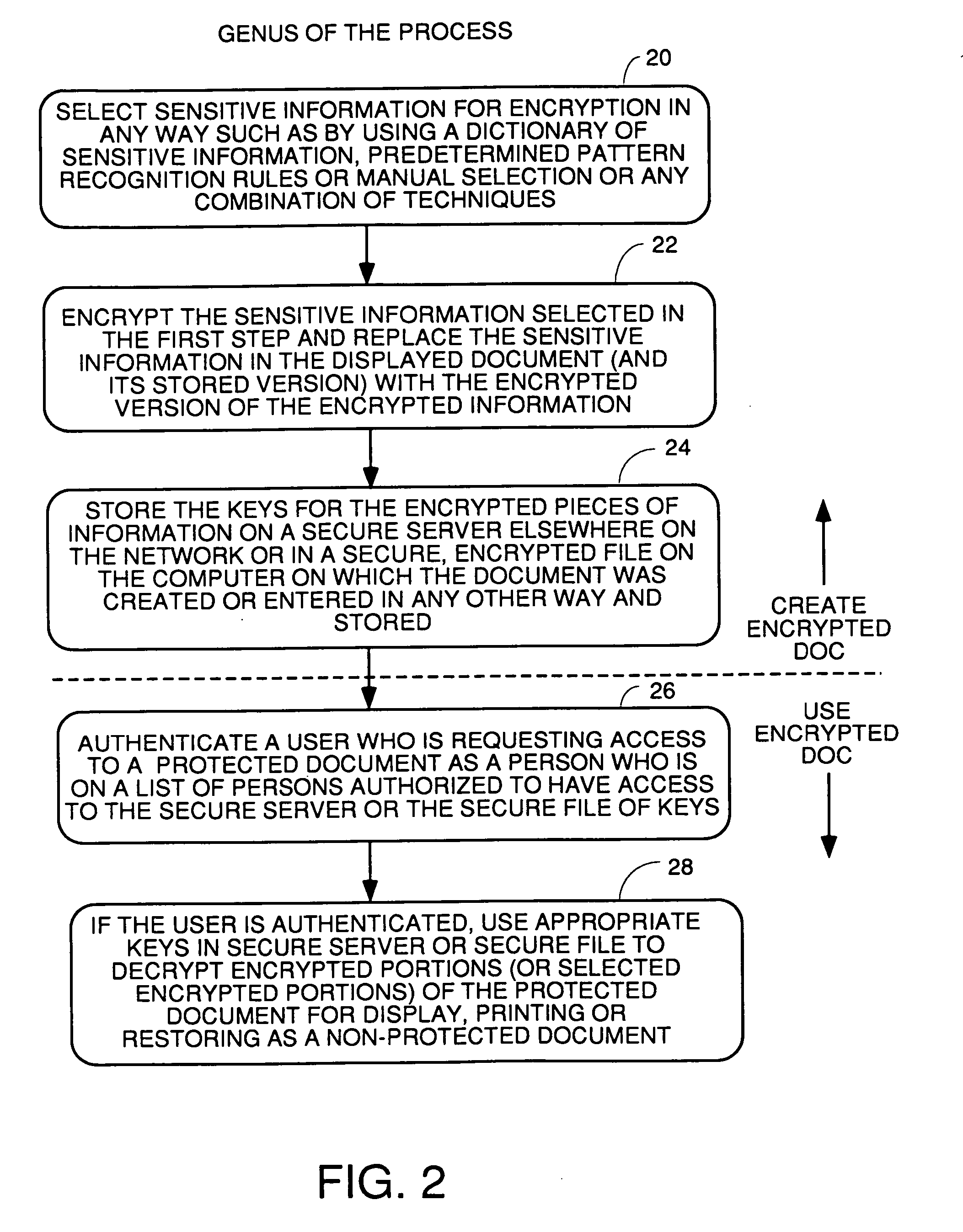Method and apparatus for recognition and real time protection from view of sensitive terms in documents
a document and recognition technology, applied in the field of recognition and real-time protection from the view of sensitive terms in documents, can solve the problems of long time beyond the expectations and assumptions of users, large amount of sensitive information residing in computers without any person, and single pieces of information like social security numbers are usually not enough to commit a crim
- Summary
- Abstract
- Description
- Claims
- Application Information
AI Technical Summary
Benefits of technology
Problems solved by technology
Method used
Image
Examples
Embodiment Construction
[0038] A software process according to one embodiment for partial encryption or partial redaction or removal of sensitive information in documents works to automatically select and protect sensitive information either as it is entered in the document or after the document is created. The preferred process genus involves three steps: 1) detecting the presence of sensitive information; 2) protecting the selected sensitive information by preventing it from being viewed; 3) storing a means for bringing the sensitive information back to a state where it can be viewed. The detection and selection can be by dictionaries, rules or learning from manual selections, and, at least for encryption or sensitive information embodiments, can be manual selection. For redaction of document embodiments, selection must be automatic because of a prior art Microsoft redaction product the applicant is aware of (name unknown) which depends upon manual selection of text to be redacted. To the extens the Micr...
PUM
 Login to View More
Login to View More Abstract
Description
Claims
Application Information
 Login to View More
Login to View More - R&D
- Intellectual Property
- Life Sciences
- Materials
- Tech Scout
- Unparalleled Data Quality
- Higher Quality Content
- 60% Fewer Hallucinations
Browse by: Latest US Patents, China's latest patents, Technical Efficacy Thesaurus, Application Domain, Technology Topic, Popular Technical Reports.
© 2025 PatSnap. All rights reserved.Legal|Privacy policy|Modern Slavery Act Transparency Statement|Sitemap|About US| Contact US: help@patsnap.com



